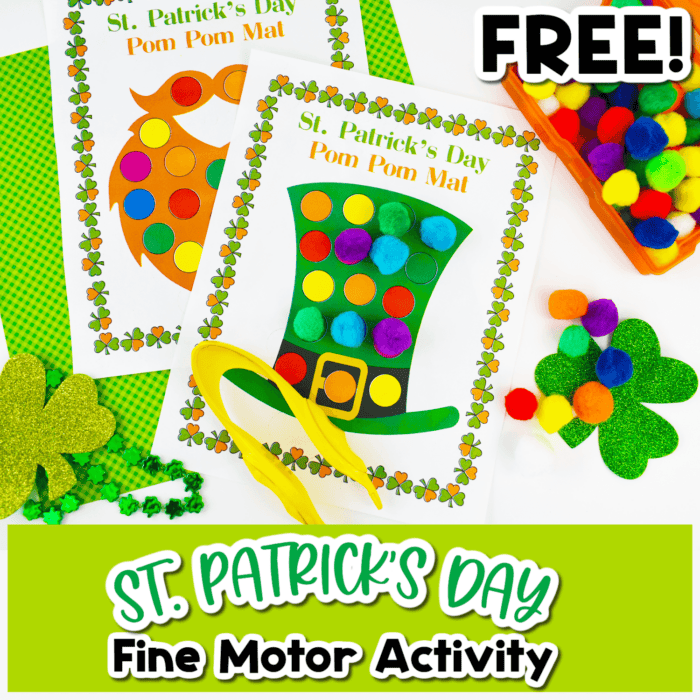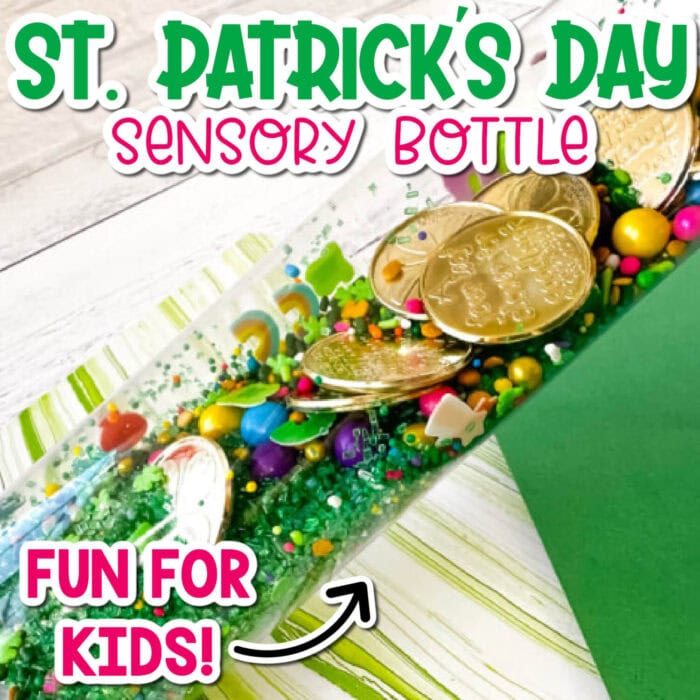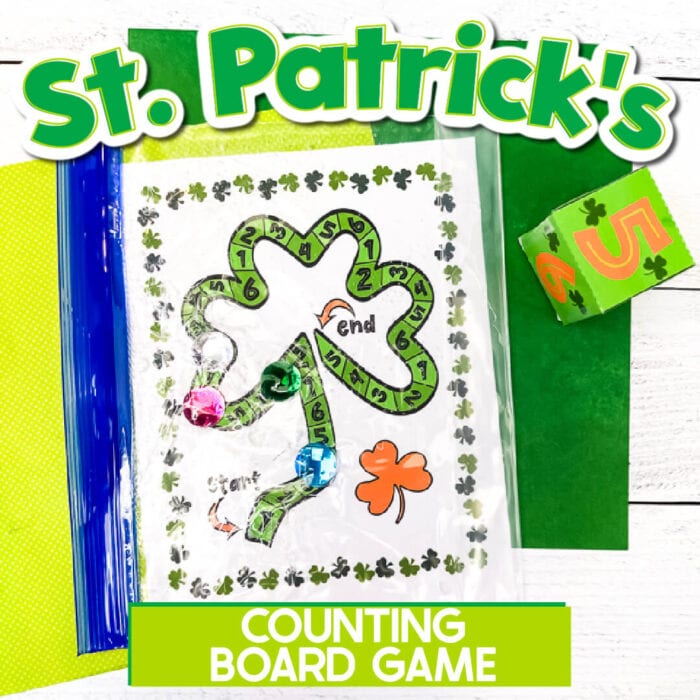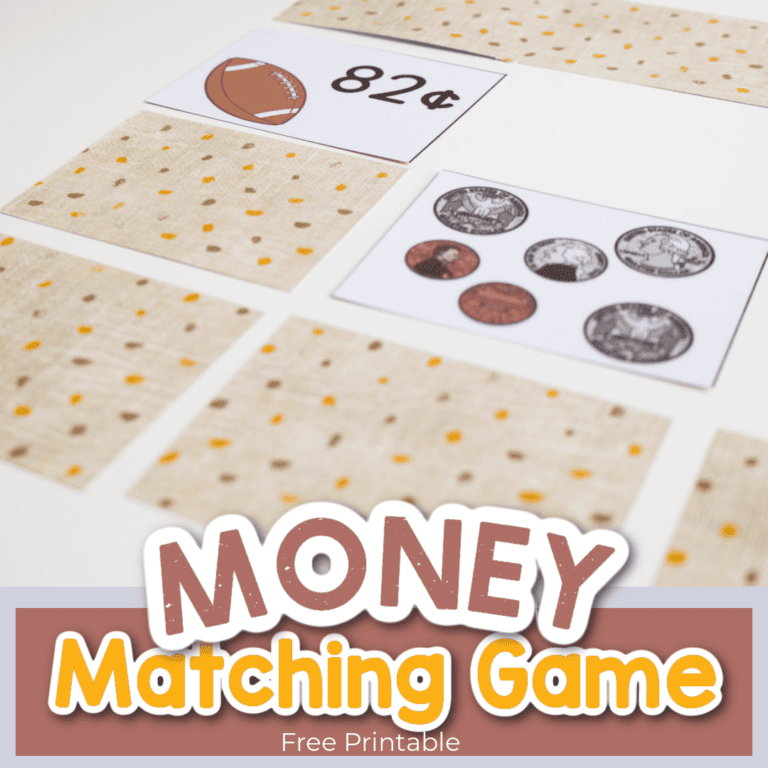St. Patrick’s Day Shamrock Borax Crystals Activity
I love incorporating as many subjects as possible into theme learning! A St. Patrick’s Day theme unit can include anything from colors of the rainbow to the history and origin of the Irish holiday. The St. Patrick’s Day Shamrock Borax Crystals for Kids are a magical science experiment and a cool craft in one!

Recommended Grade Level:
If you’re intimidated by how to make borax crystals, don’t be! This craftivity requires basic supplies you probably already have on hand (crafts sticks, chenille stems, borax). Add a bit of patience (about a day-plenty of time to move onto other theme projects, right?) and your students will be AMAZED at the results of these shamrock borax crystals!
The Science of Making Crystals with Borax
Wondering WHY do borax crystals form on pipe cleaners? Crystal growing is a fascinating science you can share with your students.
You can begin by defining a crystal: “a solid with flat sides and a symmetrical shape because its molecules are arranged in a unique, repeating pattern.”
Other common crystals we know include salt and sugar!
The crystals form in the saturated solution of borax and boiling water because heated water molecules expand, making room for more borax to dissolve. As the solution cools and becomes cold water, the molecules get shoved back together and begin to stack on top of each other.
The borax pipe cleaner crystals experiment is a great opportunity to learn about heating, cooling, and molecules!

How to Make Homemade Shamrock Crystals with Borax
Supplies Needed for the Borax Crystal Science Experiment:
- 2 cups water
- ¼ cup Borax detergent booster
- Chenille stems, 1 for each crystal
- Scissors
- Wide mouth jar or glass
- Thread or thin string
- Popsicle sticks
Borax Crystals Step-by-Step Instructions:
- To create the crystal structure from a chenille stem, twist one chenille stem into a
shamrock shape. - Attach a string to the ‘stem’ of the chenille shamrock.
- Measure borax powder and put into a wide mouth jar.
- Bring the water to a boil. Slowly pour the boiling water into the jar. Pour slowly to allow the jar temperature to adjust so it does not crack. Stir the mixture until all of the borax powder is dissolved. *It’s okay if there is still some borax at the bottom of the jar-it means you have a supersaturated solution.
- Attach the shamrock’s string to the middle of a popsicle stick (pencils work too). Then, carefully ease the chenille stem into the borax solution. Make sure to avoid the bottom and side of the jar, hanging the shamrock in the middle of the hot water solution.
- The chenille stem will start to form crystals as the solution cools. Crystals will form on the chenille stem in as little as two hours. For best results, avoid disturbing the chenille stems for 24 hours.
- Remove the chenille stems from the jar and allow to dry completely.
- Use the thread to hang the chenille stems or cut the string if desired.
More St. Patty’s Day Science Activities for Kids
St. Patrick’s Day lends itself easily to a variety of science-based activities. Easy, hands-on projects engage students while piquing their interest and teaching the basic scientific process of predicting, questioning, experimenting, observing, and concluding.
- Rainbow Science: Use jars of colored water. Place a “rope” of absorbent paper towel that leads from jar to jar. Watch how the colors “climb” the rope and form a rainbow that connects the jar.
- Experiment with candy! Arrange rainbow colored candies around the perimeter of a plate. Then, add warm water to watch the sugar and food coloring melt together to form a rainbow.
- Taste test green foods! Blindfold students and have them test a variety of green foods (broccoli, kale, edamame, gumdrop, pickles, etc.) Students can predict and describe (orally or in writing) what they taste, then discover what it was!
- Make green play dough!
- Play with “Leprechaun Sand” by experimenting with the classics: vinegar and baking soda! Add green food coloring to the vinegar then use a dropper to find out what happens when the vinegar and baking soda mix.
Do you love this activity? Pin it for later!

More Science Activities You’ll Love:
- How to Make Borax Crystals
- DIY Glow in the Dark Paint
- 10 Easy Science Activities for Kids (Using Household Items)
Looking For More St. Patrick’s Day Ideas?
Want Even More Super St. Patrick’s Day Ideas?
- St. Patrick’s Day Fine Motor Color Matching Printables
- St. Patrick’s Day Color Scavenger Hunt
- St. Patrick’s Day Math Bundle
- St. Patrick’s Day Roll and Count Game
- St. Patrick’s Day Books for Kids
Search All Activities
Looking for more? Find exactly what you need here:

























